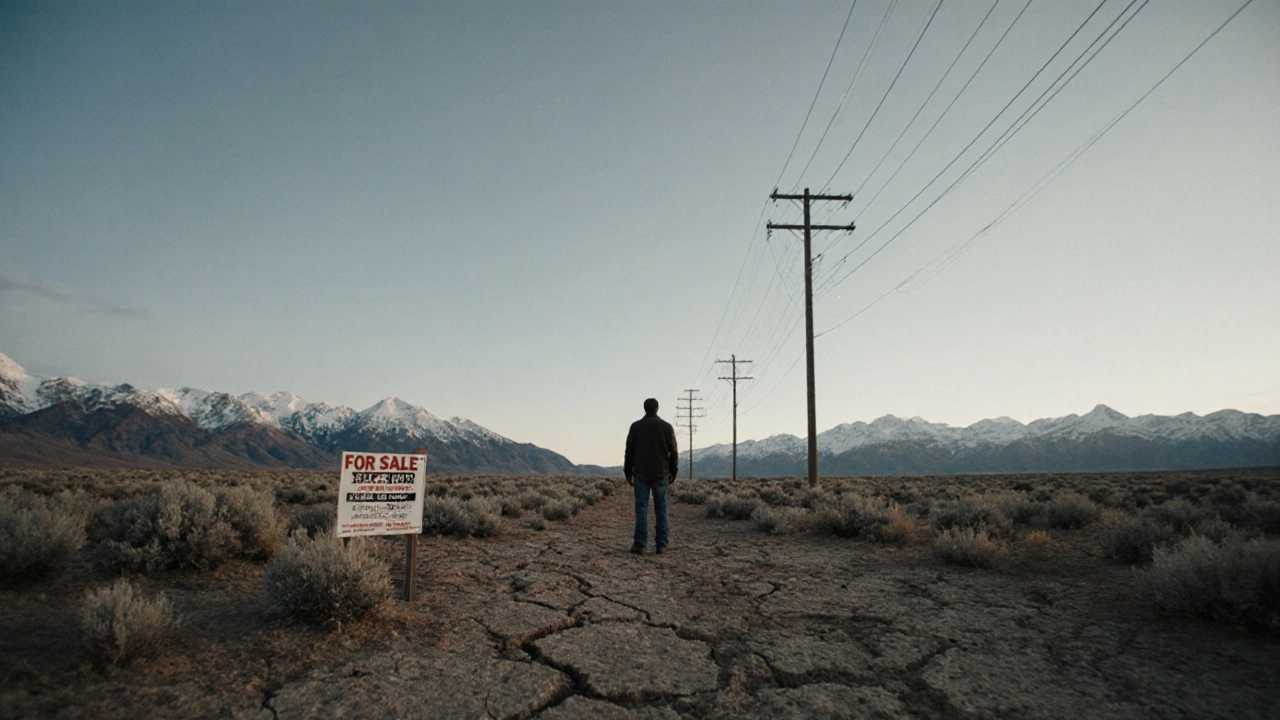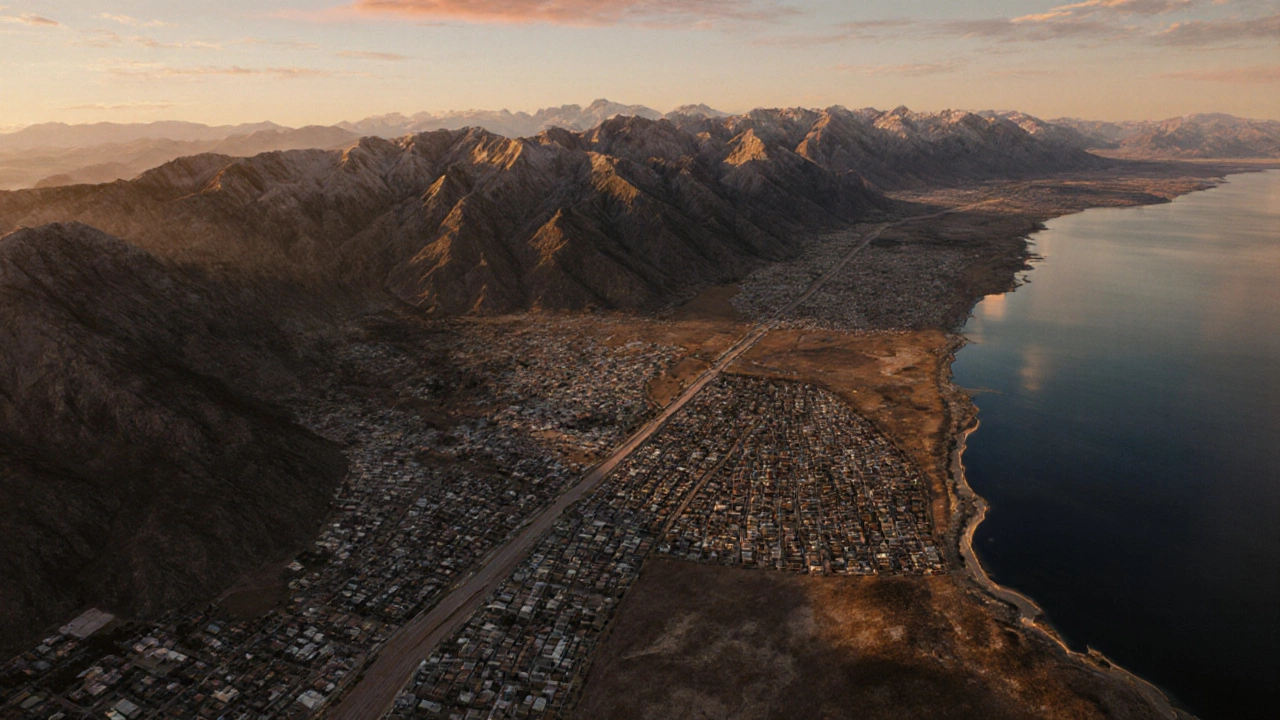Utah Land Cost Calculator
Calculate total land costs including water rights, infrastructure, and zoning requirements. Based on 2024 Utah market data.
Land in Utah isn’t just expensive-it’s getting pricier faster than almost anywhere else in the U.S. If you’ve looked at a parcel outside Salt Lake City or near Park City lately, you’ve probably stared at a price tag that made you blink. Why? It’s not just one thing. It’s a mix of population boom, limited space, and rules that make it hard to build more. And if you’re thinking about buying land there, you need to understand the real reasons behind the cost.
People are moving in-fast
Utah has been one of the fastest-growing states for over a decade. Between 2010 and 2024, the population jumped from 2.8 million to over 3.4 million. That’s a 21% increase in just 14 years. And it’s not slowing down. In 2023 alone, more than 50,000 people moved to Utah from other states. Most came from California, Colorado, and Washington, chasing lower taxes, better schools, and outdoor access.
When that many people show up at once, they all need somewhere to live. That means houses, apartments, and yes-land. But here’s the catch: Utah’s geography doesn’t make it easy to spread out. The Wasatch Front, where 80% of the state’s population lives, is squeezed between the Wasatch Mountains to the east and the Great Salt Lake to the west. There’s nowhere else to go but up-or into the desert.
Land is limited-and not all of it can be built on
Utah isn’t just crowded. It’s physically constrained. Over 60% of the state is desert, mountain, or federal land. That means private landowners can’t just buy a big chunk of the desert and start building. Much of it is protected, owned by the Bureau of Land Management, or too rocky, dry, or steep to develop.
Even in areas that look flat and open, like the western edge of Utah County, there are restrictions. Wetlands, endangered species habitats, and water rights all limit what you can do. A 10-acre plot might look perfect on Google Earth, but if it’s near a seasonal creek or a protected sagebrush habitat, you might not be allowed to build a single home on it. That shrinks the supply of usable land-and drives prices up.
Water is the silent gatekeeper
Here’s something most people don’t realize: in Utah, water rights are tied to land. You can’t just drill a well and start building. You need to buy or lease water rights from the state, and those are expensive and scarce. In some counties, a water right for a single-family home can cost $20,000 to $50,000 on top of the land price.
And it’s getting harder to get them. The state’s water supply is under stress. The Colorado River, which feeds much of southern Utah, is at its lowest level in 1,200 years. Cities like St. George and Provo are already rationing water for new developments. Developers have to pay more for water, and they pass that cost on to buyers. So when you see a $150,000 lot, $30,000 of that might be water rights-not the dirt itself.

Building codes and zoning slow things down
Utah’s cities want growth-but not chaos. That means strict zoning laws. In many suburbs, you can’t build a single home on less than one acre. In some areas, you need a minimum of two acres. That’s not just a rule-it’s a bottleneck. It means fewer homes can be built on the same amount of land, pushing up the price per parcel.
And don’t forget the permitting process. Getting approval for a septic system, driveway, or well can take 6 to 12 months. Some developers give up and walk away. Others raise prices to cover the delays. The result? Land sits idle longer, and when it finally sells, it’s priced to cover all the risk and waiting.
Investors and out-of-staters are driving competition
Utah isn’t just attracting families. It’s attracting investors. Hedge funds, out-of-state real estate groups, and even foreign buyers are snapping up land in anticipation of future growth. In 2023, nearly 35% of land sales in Utah County were to non-residents. These buyers aren’t building homes-they’re holding land for 5 to 10 years, waiting for prices to rise.
That changes the market. When a family wants to build their first home, they’re not just competing with other families. They’re competing with people who have deep pockets and no need to live there right away. That drives bidding wars. A lot that sold for $80,000 in 2020 went for $210,000 in 2024-not because it got bigger, but because demand outpaced supply.

Infrastructure costs get baked into the price
Land isn’t just dirt. It’s access to roads, power, sewer, and internet. In rural areas, those things don’t come for free. If a parcel is 5 miles from the nearest power line, the developer has to pay to run it in. That can cost $50,000 or more per lot. Those costs don’t disappear-they get added to the land price.
Even in newer subdivisions, you’ll often see a “development fee” that covers water lines, street lighting, and sidewalks. These fees can add $20,000 to $40,000 to the cost of a lot. And since they’re not always listed upfront, buyers think they’re getting a “cheap” parcel-until closing day.
What’s next? Prices won’t drop soon
Utah’s population is still growing. The state expects to hit 4 million people by 2030. That means more demand for land. Meanwhile, the supply is shrinking. Federal land can’t be sold. Water rights are capped. Zoning rules aren’t loosening. And investors aren’t going anywhere.
So if you’re waiting for land prices to drop, you’ll be waiting a long time. The only way to find affordable land in Utah now is to look farther out-places like Tooele County, Box Elder County, or even eastern Utah near Vernal. But even there, prices are rising. And if you’re looking for something you can build on next year, you’ll need to move fast.
What can you do?
Don’t just look at the price tag. Look at the whole picture:
- Check water rights-ask if they’re included and how much they cost.
- Verify zoning-can you build a home? A tiny house? A barn?
- Ask about infrastructure-who pays for roads, power, and septic?
- Look beyond the Wasatch Front-prices drop 30-50% just 60 miles east or west.
- Consider land with existing utilities-it’s rare, but it saves you $50,000+.
There’s no magic fix. Land in Utah is expensive because the rules, geography, and demand all line up against buyers. But if you know what you’re looking for, you can still find value-just not where everyone else is looking.
Is land in Utah more expensive than in other Western states?
Yes, in most cases. Utah’s land prices have outpaced Arizona, Nevada, and even Colorado over the last five years. While Arizona has more available desert land and Nevada has fewer water restrictions, Utah’s combination of high demand, strict zoning, and limited developable space makes its land more expensive per acre. In 2024, the average price per acre in Utah was $48,000-compared to $31,000 in Arizona and $29,000 in Nevada.
Can you buy land in Utah without water rights?
You can buy the land, but you won’t be able to build a home on it legally. Water rights are required for any residential development in Utah. If you buy land without them, you’re buying dirt with no practical use unless you plan to haul water in by truck-which isn’t feasible for long-term living. Some sellers list land as "water rights available," but those are often separate purchases that cost tens of thousands of dollars.
Why can’t Utah just build more homes to lower prices?
It’s not that simple. Even if builders wanted to build more, they’re blocked by geography, water limits, and zoning. Most of the state is mountains or desert. The only viable area is a narrow corridor along the Wasatch Front, and that’s already packed. Zoning laws require large lot sizes in many suburbs, which limits density. Plus, infrastructure like roads and water lines can’t keep up with demand. Building more homes requires solving all those problems at once-and that takes time, money, and political will.
Are there any areas in Utah where land is still affordable?
Yes, but they’re far from the big cities. In Tooele County, west of Salt Lake City, you can find raw land for $15,000-$30,000 per acre. In Box Elder County, near the Idaho border, prices are even lower. But these areas are 45-90 minutes from jobs, schools, and hospitals. You’ll need to budget for longer commutes and higher utility installation costs. The trade-off is price vs. convenience.
Will land prices in Utah ever come down?
Not unless something major changes. Population growth is still strong. Water shortages are worsening. And investors are still buying land as a long-term asset. The only scenario where prices drop is if a recession hits hard enough to stop migration into Utah-or if the state changes its water and zoning laws dramatically. Neither is likely in the next five years.

